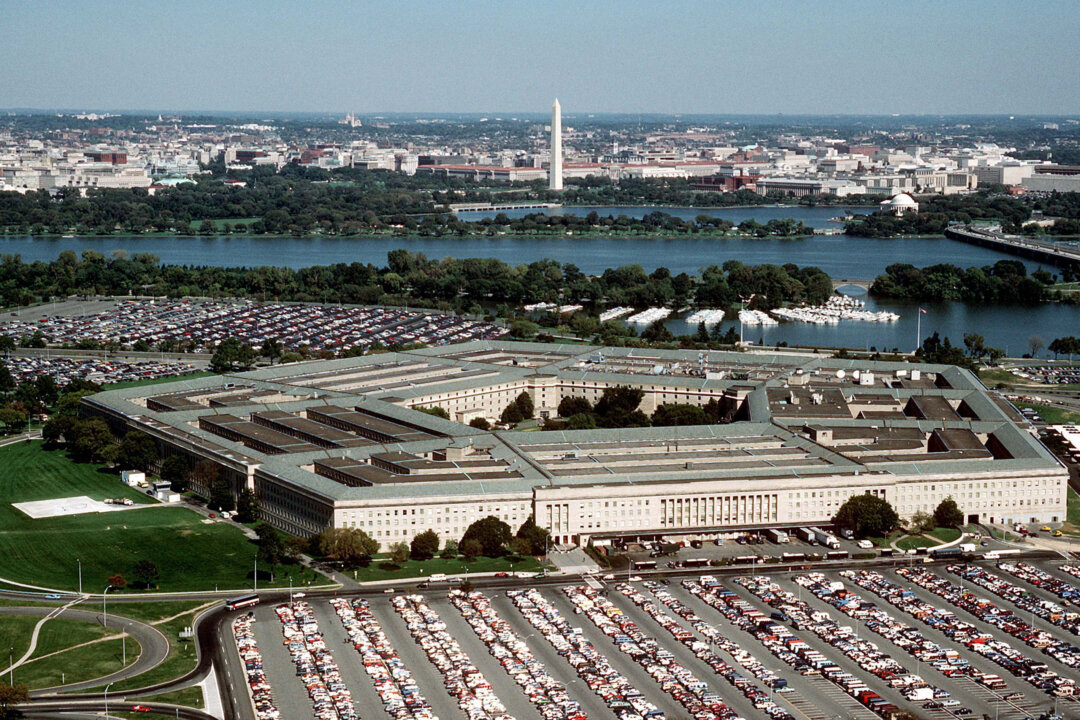Topic: SecurityBlog Brand: The BuzzRegion: AsiaTags: China, Hypersonic Weapon, Pete Hegseth, Russia, and U.S. NavyPete Hegseth Is Right About China’s Hypersonic Weapons April 19, 2025By: Peter SuciuShareShare this link on FacebookShare this page on X (Twitter)Share this link on LinkedInEmail a link to this pageU.
S. Secretary of Defense Pete Hegseth’s warnings of Chinese, Russian, North Korean, and even Iranian developments in hypersonic weapons is more than establishment fear-mongering on the capabilities of foreign powers, but serious and well-founded concerns for the U.S.

military.Past comments from Secretary of Defense Pete Hegseth about the threat that the United States Navy’s fleet of nuclear-powered supercarriers faces from advanced Chinese missiles have been making the rounds online. Though made in November and before his confirmation to head the Department of Defense (DoD), the former Fox News weekend host sat down for an interview with the Shawn Ryan Show and warned that Beijing’s hypersonic missiles could destroy a carrier.
“So, if our whole power projection platform is aircraft carriers, and the ability to project power that way strategically around the globe. And, yeah, we have a nuclear triad, but [carriers are] a big part of it,” Hegseth explained. “And if fifteen hypersonic missiles can take out our ten aircraft carriers in the first twenty minutes of a conflict, what does that look like?“China, along with Russia, North Korea, and even Iran, has made great strides in developing hypersonic weapons, which have exceeded five times the speed of sound and can maneuver in flight, making them much more complicated than conventional cruise missiles to counter.
The Washington Times suggested that Hegseth “has a clear understanding of China’s advanced missile capabilities and highlights the threat posed by PLA asymmetric warfare capabilities. U.S.
aircraft carrier strike groups currently have limited defenses against hypersonic missiles. Anti-missile interceptors can be deployed on group destroyer escorts.“The hyperbole may overstate the hypersonic capabilities at least slightly.
Though the weapons can reach such high speeds that the kinetic force would be so great that explosives may not be needed to inflict severe damage on a target, including a large warship, the ocean remains vast. Even the massive carriers are small by comparison. Carriers aren’t static while at sea, after all.
Beijing Is Using U.S. Carrier Models as Literal Target Practice for Hypersonic WeaponsChina has not attempted to conceal the fact that it has put the U.
S. Navy’s Nimitz-class and even the new Gerald R. Ford-class flattops in the literal crosshairs, at least in training exercises far from the open ocean.
In 2021, Colorado-based Maxar Technologies photographed a remote Chinese military target range in the Taklaman Desert, west of Ruoquiang, Xinjiang Province. A mockup resembling the USS Gerald R. Ford was spotted there, and in addition to the carrier, the People’s Liberation Army (PLA) also constructed two detailed replicas of the U.
S. Navy’s Arleigh Burke-class guided-missile destroyers.There has been speculation that the target range has been employed to test Beijing’s advanced anti-ship ballistic missiles (ASBMs), including the Dong Feng-21D (DF-21D) and the Dong Feng-26B (DF-26B) that can be fired from road mobile launchers.
While the DF-21D has a range of 500 kilometers and serves as an anti-access/area denial (A2/AD) platform to protect the East and South China Seas, the newer DF-26B has a much further range of 4,000 kilometers.Dubbed a “carrier killer,” the DF-26B could be armed with a 1,200 to 1,800 kg conventional or nuclear warhead to strike targets on the U.S.
island territory of Guam as well as other U.S. assets in the region, including the carriers.
America Trains Its Anti-Hypersonic Weapon CapabilitiesIt does need to be stressed that the United States isn’t simply sitting back. Last month, the United States Navy carried out a test of its Flight Test Other 40 (FTX-40), known as “Stellar Banshee,” from the Arleigh Burke-class guided-missile destroyer USS Pinckney (DDG-91) to detect, track, and even engage a maneuvering hypersonic missile in simulated light.It marked the first successful use of upgraded Aegis software in a ballistic missile defense (BMD) flight test mission.
Beyond the tests to stop a hypersonic weapon, the sea service has also been focused on anti-carrier tactics.Last year, the U.S.
Navy conducted live fire exercises that weren’t aimed at a plywood target in the desert, and instead, it used the amphibious transport dock the ex-USS Cleveland (LPD-7) during a SINKEX as a target ship. In contrast, the ex-USS Tarawa (LHA-1), the lead vessel of a class of amphibious assault ships, was also sunk off the coast of Hawaii during the 2024 Rim of the Pacific (RIMPAC) last summer. It is the first time a Tarawa-class LHA has been sunk as a target in nearly two decades and only the second of the class to be employed in a SINKEX.
LHD-1 was sunk by U.S. Navy Boeing F/A-18 Super Hornets armed with the AGM-158C Long Range Anti-Ship Missile (LRASM).
During the same exercise, the decommissioned ex-USS Dubuque (LPD-8), an Austin-class amphibious transport dock, was sunk by U.S. Air Force Lockheed Martin B-2 Spirit bombers.
Beijing may be considering sinking the U.S. Navy’s carriers.
Still, the Pentagon has been focused on ways to stay ahead and counter these persistent threats while ensuring it can send any Chinese flattops straight to the bottom of the ocean.About the Author: Peter SuciuPeter Suciu is a Michigan-based writer. He has contributed to more than four dozen magazines, newspapers, and websites with over 3,200 published pieces over a twenty-year career in journalism.
He regularly writes about military hardware, firearms history, cybersecurity, politics, and international affairs. Peter is also a Contributing Writer for Forbes and Clearance Jobs. You can follow him on Twitter: @PeterSuciu.
You can email the author: [email protected]: Shutterstock/ Kirill Borisenko.
The post Pete Hegseth Is Right About China’s Hypersonic Weapons appeared first on The National Interest..
Politics

Pete Hegseth Is Right About China’s Hypersonic Weapons

U.S. Secretary of Defense Pete Hegseth’s warnings of Chinese, Russian, North Korean, and even Iranian developments in hypersonic weapons is more than establishment fear-mongering on the capabilities of foreign powers, but serious and well-founded concerns for the U.S. military.The post Pete Hegseth Is Right About China’s Hypersonic Weapons appeared first on The National Interest.














